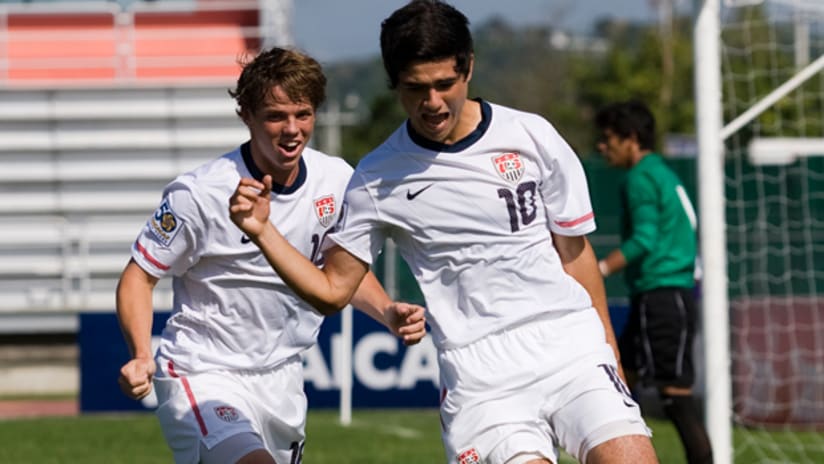For the United States U-17 national team, their run in Jamaica finished in wild success. They wrapped the CONCACAF Championship with a 3-0 victory over Canada on Sunday to hoist their first title in the tournament in 19 years and booked a record 14th consecutive berth in the U-17 World Cup in the process.
But that doesn't tell the whole story. Here are five things we learned about Wilmer Cabrera's team.
1. The tournament was a success.
The US traveled to Jamaica with one goal in mind: reaching the U-17 World Cup in Mexico in June. They achieved this end with a 3-2 victory over El Salvador in the quarterfinals. Winning the 12-team affair was simply an added bonus.
Cabrera's teenagers proved they belong at the World Cup, finishing on the top of their group and then prevailing in the vital quarterfinal game. Put another way, the Americans didn't lose a match and outscored their opponents 11-3. It's hard to view those results as anything less than a success.
READ: Smith's wonder-goal guides US to victory over Canada in final
2. The team needs to be better.
[inlinenode:329518]That said, let's not confuse success with strong performances. Even taking into account the poor condition of the Catherine Hall Stadium field, the Americans rarely looked like the dominant side. They won't last long in Mexico giving these types of performances.
The US were out of synch offensively and frequently without ideas. They were content to let the game come to them, rather than going out and seizing victory against teams that were athletically and technically inferior. They won, but matches against Panama, El Salvador and Canada, specifically, could have gone against them.
3. The team needs to be better disciplined.
The most troubling aspect of the American performance was their incessant complaining and propensity to pick up unnecessary cards. The teenagers constantly questioned calls (or non-calls) made (or not made) by the referee. Mario Rodriguez, Marc Pelosi and Alejandro Guido were three of the worst offenders, but it's a team-wide issue that borders on absurd. The team needs to just play.
And then there were the late red cards shown to Fernando Piña, Kellyn Acosta and Andrew Oliver. All three came with the match in question already won. (Oliver's will hurt the most since the scoring star will miss the first game of the World Cup.) Some blame can be placed on over-eager officials, but the Americans showed their hot-headness during the Nike International Friendlies and they haven't learned anything since. Cabrera needs to teach his charges to walk away.
4. A goalkeeper controversy?
[inlinenode:328058]Houston Dynamo Academy 'keeper Piña entered the tournament as the clear No. 1, but the Houston Dynamo Academy product picked up a bad red card near the death of the El Salvador fixture and missed a second game as dictated by CONCACAF officials.
Kendall McIntosh played well in his absence, looking especially spry coming off the line against Canada. The netminder also controlled the box well against Jamaica and posted a clean sheet, although he didn't need to make any saves.
Piña was solid in his three tilts between the pipes, but never overly impressive and frequently struggled to put his clearances in places that would help facilitate the attack. He's still the starter, but Cabrera's leash will be shorter after seeing how well McIntosh handled his two starts.
5. Is Bradenton working?
Make no mistake: There is talent on this team at most positions, and the players are coming from all over the world. Oliver, Rodriguez and Alfred Koroma – who returned after taking a year off – can trouble defenses. Mobi Fehr, the Americans' best center back, joined the Residency Program from Tokyo, while Joe Amon was perhaps the best right back in the tournament. Alejandro Guido and Marc Pelosi make things happen in the midfield.
But there's a problem. The team, which trains day in, day out, doesn't look like a cohesive squad. Their passing is suspect. Their tracking back on defense almost non-existent. They aren't any more than the sum of their parts (and those parts are not exactly world-class). While the senior team usually overachieves based on its talents – at the very least, the players kill themselves trying – the U-17s lack that same fire. If the US fail to impress during the World Cup, you have to think most of the blame should fall on Bradenton and, by logical extension, Cabrera.
Noah Davis covers the United States national team for MLSsoccer.com. Follow him on Twitter at @noahedavis.


